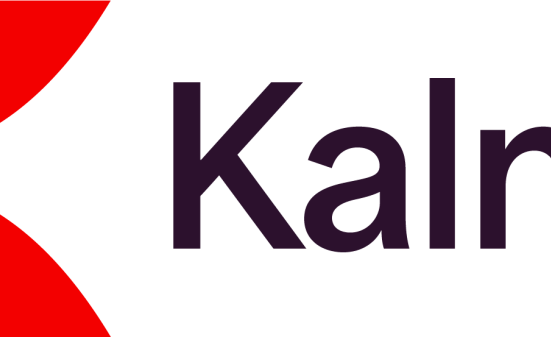In May, Andrew, who lives in the UK, borrowed €400,000 to buy a second home in the Alps for a little over €1.2mn, from French bank Crédit Agricole, on a 15-year variable-rate mortgage.
He could have funded the entire purchase with cash, or borrowed the money by increasing the mortgage on his main home in the UK. But, with a good selection of products available from French banks, and a recent cut in the European Central Bank rate, several offered lower repayments than if he borrowed back home.
Paying cash would have meant cashing in investments. “Interest rates are relatively high now, but in the long term the investment returns from my equity portfolio, after taxes and fees, should beat the cost of the mortgage,” he says.
Another benefit compared with taking finance in the UK is managing his currency risk, he says: “This way I can hedge my exposure to the euro home with a euro loan.”
Thanks to the growing availability of mortgages from European banks this year, and falling rates on many products, UK second home buyers are looking to local banks to finance purchases abroad.

“After pulling products to UK borrowers for much of 2022 and 2023, European banks are lending again,” says Fiona Watts, of International Private Finance, which specialises in mortgages for second home purchases by European buyers in France, Spain and Portugal. Today, roughly one in three customers who approach her qualify for a mortgage offered by a domestic bank, up from one in six at the start of the year (before rates in Europe started to increase in 2022, it was more than half).
French mortgage rates to UK borrowers have fallen since the start of the year, particularly on fixed-rate mortgages. According to International Private Finance, the best rates on an 80 per cent loan-to-value ratio available for their British buyers in January were 4.12 per cent for a variable and 4.85 per cent for a fix. Today those have fallen to 4.02 per cent and 4.4 per cent respectively. In Spain rates have fallen less, and currently sit around 4.70 per cent for a 15-year fix (in both countries most British borrowers favour products with a term of 15 or 20 years).
While this shift has made fixed-rate products more popular than the start of the year, for many borrowers the Crédit Agricole variable-rate product that Andrew took is still the best-value option for those buying in France, according to Watts. It charges a 0.5 per cent margin over the 12-month Euribor rate, currently 4.22 per cent, but the rate is capped for the duration of the mortgage at 1 per cent over Euribor at the time of the first payment.
Like many French products, the CA mortgage comes with conditions: in this case, a year’s worth of interest payments deposited in a cash account with the bank upfront, and a life insurance policy — which could be expensive for older borrowers, or those with major health conditions, but proved little impediment to Andrew. “These are annoying, but the life insurance policy only costs €70 per month, so it wasn’t a big problem,” he says.
Watts and Liam Wilkinson of Fortier Finance, which specialises in loans to wealthy clients buying homes in France, say few domestic lenders have passed on the ECB rate cut in the form of lower rate mortgages to UK borrowers.
“Most had priced it in already, and with the French elections coming up [on June 30 and July 7] banks are nervous,” says Wilkinson.
Many second-home purchasers will explore financing with their private bank or wealth managers. But few are taking that route, according to Watts. “In general, for the UK or US buyer, the French lender will offer a lower rate than their private bank,” says Wilkinson.
Sometimes, though, a private bank will offer a lower rate in exchange for fees for the management of an investment portfolio that is being used as security for some or all of the value of a purchase.
Wilkinson is currently arranging a 100 per cent mortgage on a €2mn purchase for an English couple in the French Riviera. Seventy per cent of the loan will be a conventional mortgage secured against the home at a 3.8 per cent rate and the remaining 30 per cent against a large investment portfolio of shares and bonds, which the bank will manage. “The fees from the management allow them to give the loan at a lower rate. And the loan can be repaid at any time,” he says.
Andrew had the option to take one of these so-called Lombard loans but decided against it, because moving his investment portfolio from a low-fee platform to a private bank offering the Lombard loan, would mean a big increase in management fees. (Private banks typically charge about 0.8 per cent a year.) “I felt it would erode any benefit to the better rate I was getting on the loan. In the long term, high management fees are the biggest drag on investment performance.”
These are levied by local governments and vary considerably across Spain, according to Juanita Casanas, who runs Lionsgate Capital, which arranges finance for wealthy people buying Spanish homes. “In most cases, this is enough on its own for clients to take on a mortgage,” she says.
While mortgages with a shorter fixed period are available to UK borrowers in Spain, they are very rare in France, and unpopular where they do exist, since notary fees to register a new mortgage run at around 2 per cent, making a new loan expensive. Early repayment options provide another way to reduce the time you are committed to a fixed-rate deal.
Watts is currently arranging a €1.75mn loan for an English client on a €3.58mn house purchase in Sotogrande in southern Spain, with a fixed rate of 4.55 per cent over 15 years, from a Spanish bank. The product allows 25 per cent repayment per year; the client, who works in private equity, will use the proceeds from his business to repay the mortgage over the next four years.
In most cases, taking out a mortgage with a domestic lender after purchasing a home is very difficult in France or Spain. “As rates have fallen this year, a number of clients who bought with cash in 2023 have been disappointed to learn they can’t take advantage of lower rates to take a mortgage on homes they already own,” says Watts.
Some owners therefore prefer to stick with high variable rates than pay off their mortgages.
Dorian Caffot De Fawes, who is originally from France, but is a UK tax resident, splits his time between London and Spain. He took out a 10-year variable-rate mortgage to buy his Menorca townhouse in 2020. Since then, the rate he pays has increased from 1.74 per cent to 4.35 per cent.
The early repayment fee period on the mortgage has expired, and he could afford to pay it off, but he would like to buy another home on the island one day, and will need the cash.
“I’d rather pay the higher rate and have the money available for when I find something,” he says. “It’s still an inviting time to buy in Menorca: I mean, where else in Europe can you find a five-bedroom house for €400,000?”
With the possibility that mortgage rates could fall further this year, some buyers are considering delaying a second home purchases until finance is cheaper.
Tim Swannie, who runs buying agents Home Hunts, a buying agent specialising in the Cote d’Azur, estimates typical discounts on sales in his area remain between 5 per cent and 10 per cent. “But falling interest rates are likely to bring buyers back to the market, and that could increase prices,” he adds.






